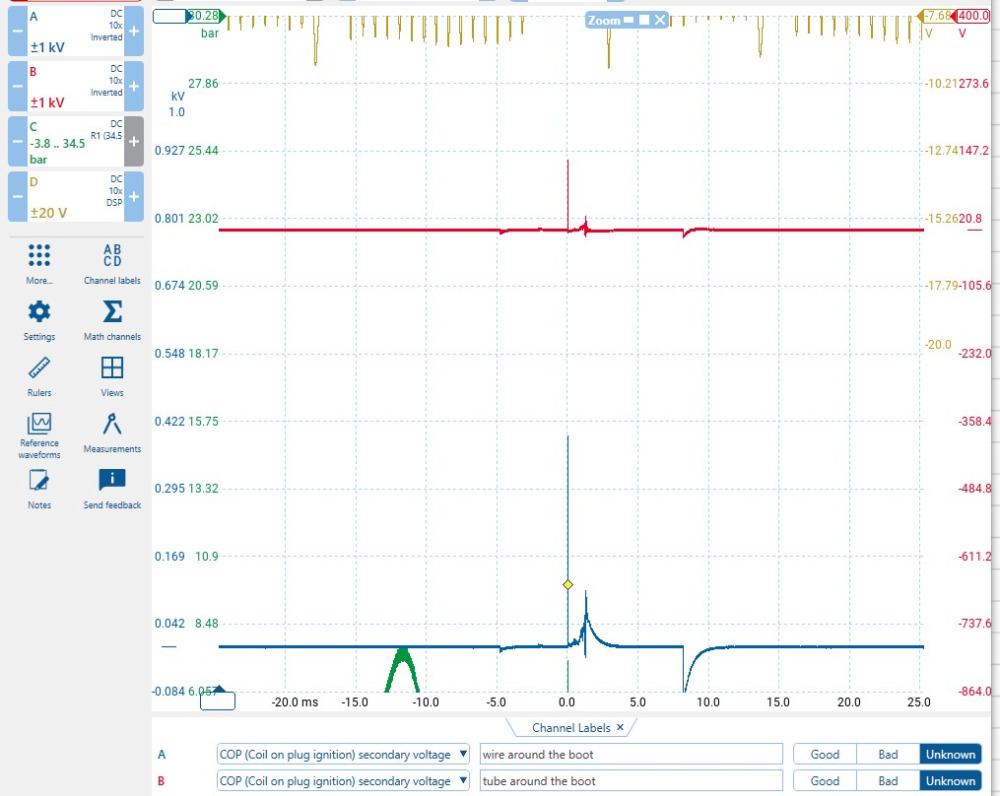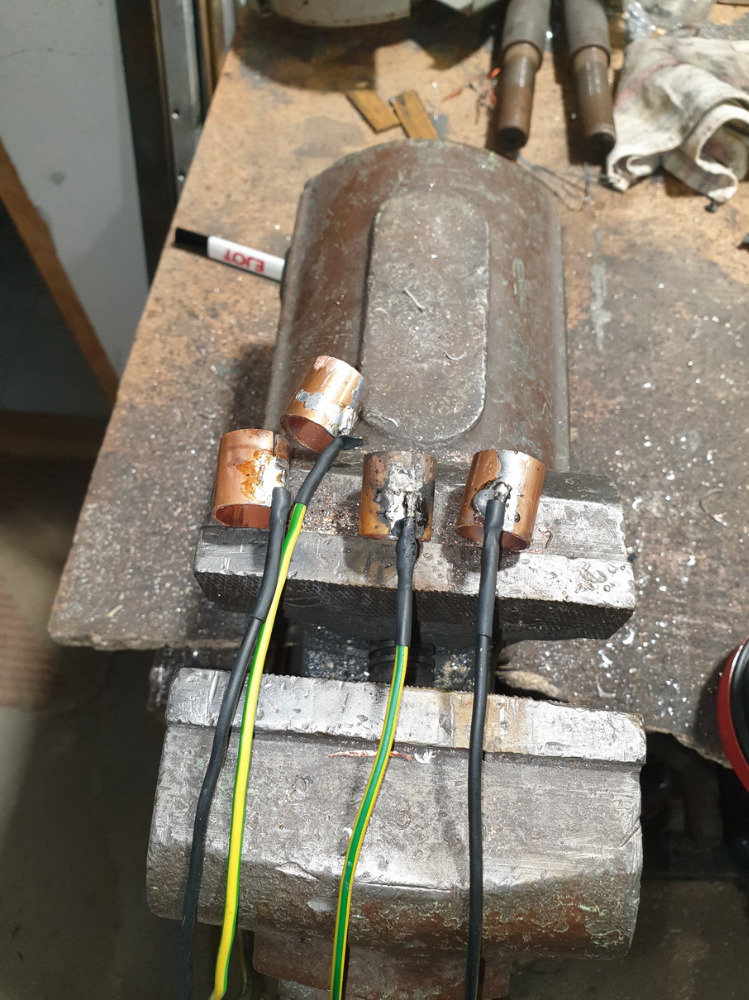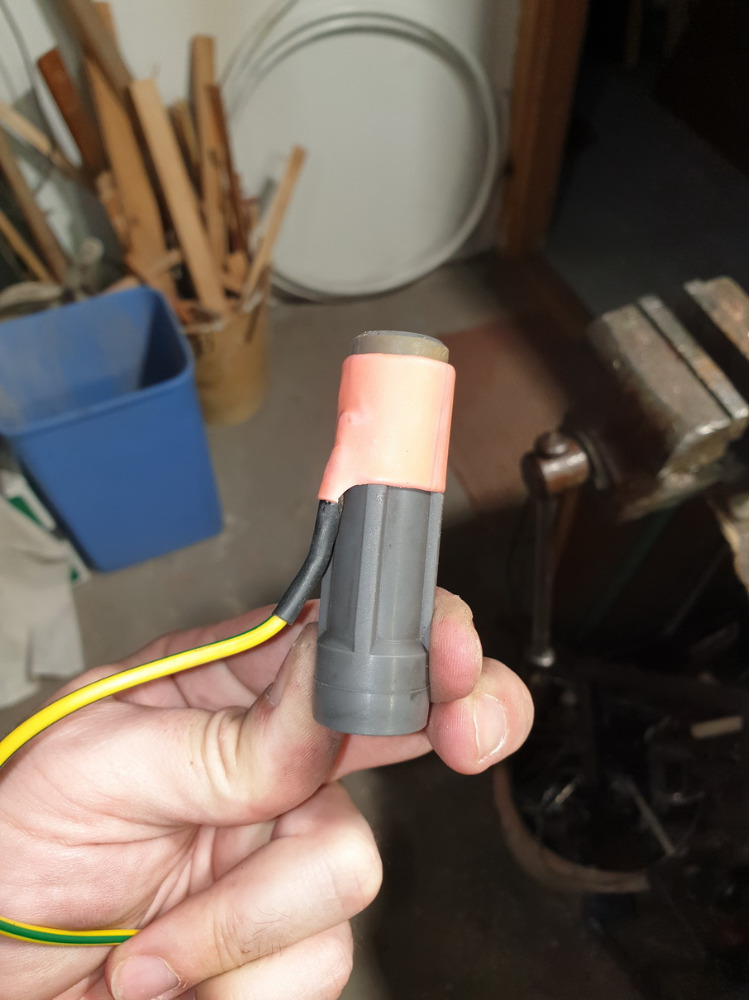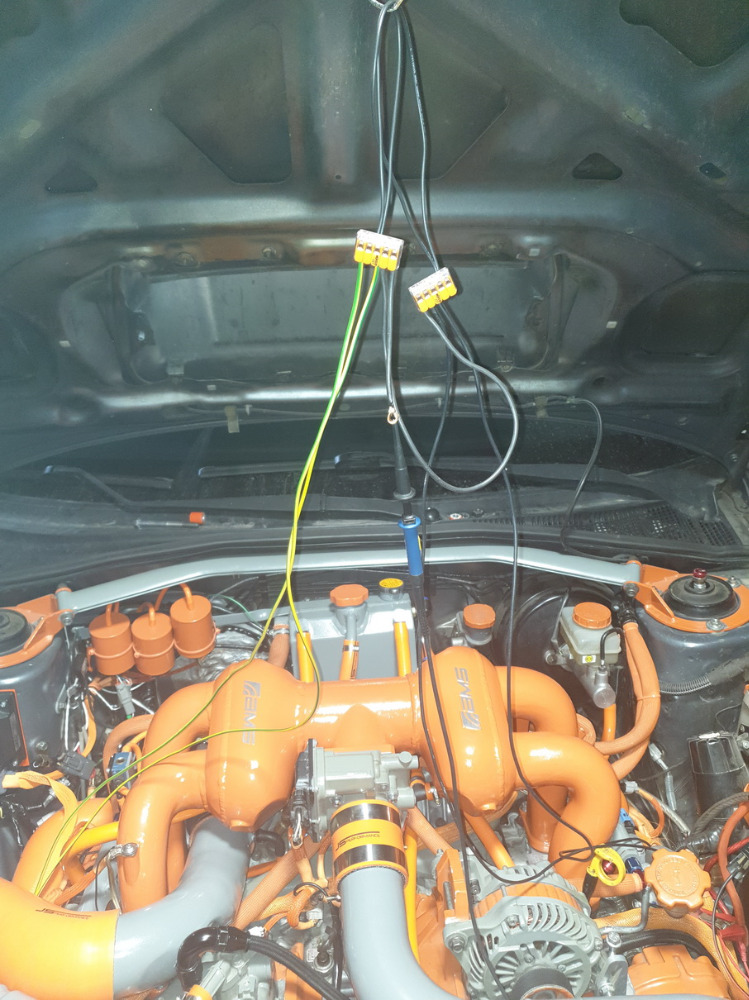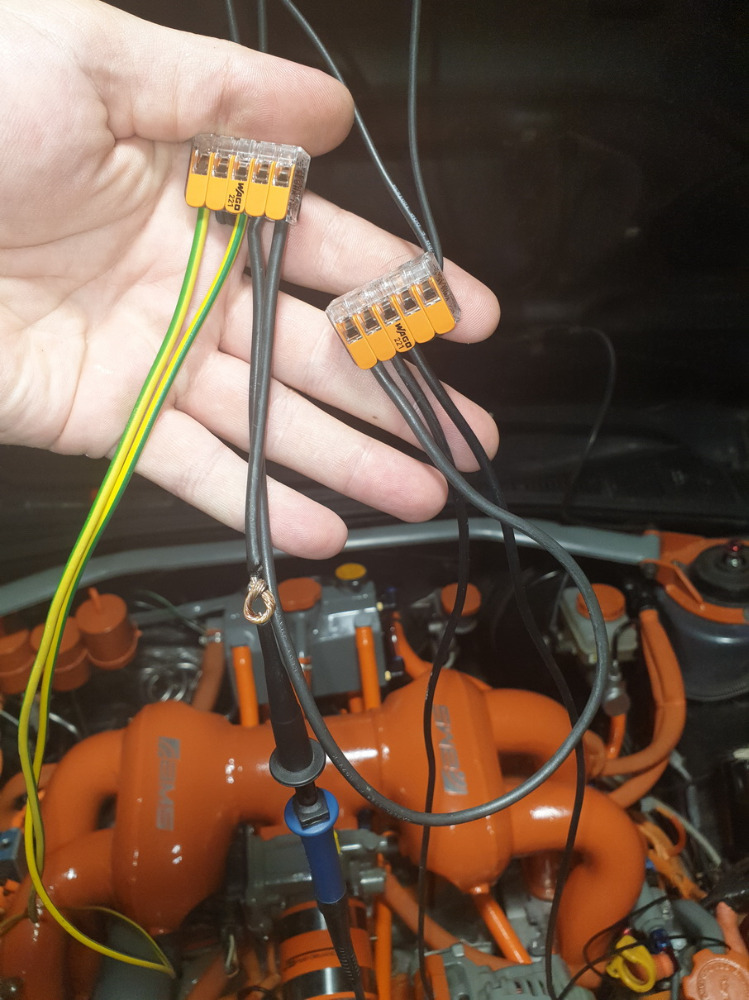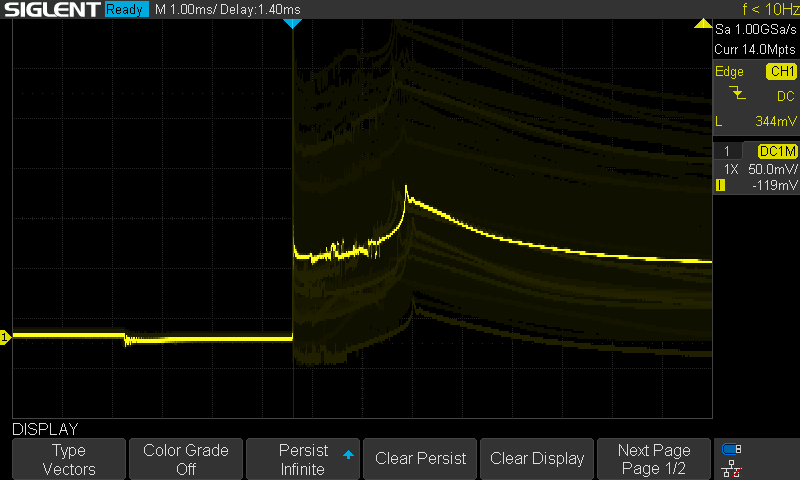A place to discuss hardware/software and diagnostic procedures
Secondary ignition waveform
3 years 6 months ago #43247
by realxman
Replied by realxman on topic Secondary ignition waveform
I just ran across this thread trying to fix an ignition problem. Any idea how to set up the HT25 for use in picoscope? I just waisted a lot of time because I had the pickup end of the HT25 on the ground side of my coil primary and grounded on battery negative post, because I was thinking I had a coil short issue. My scope showed 12000 volts! Well I had the scope set up to 1000:1 attenuation because that's what the HT25 was (mine came with no documentation, and hanteck's site provides none either.) So on a whim I put the HT25 pickup end on battery positive and grounded it to battery negative and set my scope to 1x attenuation, and it showed 12 volts. So if the HT25 dumps voltage after a certain threshold as Andy has said, does anyone know what that threshold is? I believe in picoscope you can show different attenuation for different voltage levels so it would be nice to set that up. Normally I would just put my meter on it, but with the high voltage I don't want to risk blowing the meter.
Please Log in or Create an account to join the conversation.
3 years 6 months ago #43248
by realxman
Sorry I didn't see this before. Andy do you think the Ht25 is about the same?
Replied by realxman on topic Secondary ignition waveform
Andy.MacFadyen wrote: A 20:1 attenuator is for ignition primary (also often used for injectors) because coils are inductors that produce "back EMF" spikes when the coil is switched off of 80v or so.
Sorry I didn't see this before. Andy do you think the Ht25 is about the same?
Please Log in or Create an account to join the conversation.
2 years 11 months ago - 2 years 11 months ago #48483
by rozsko
Replied by rozsko on topic Secondary ignition waveform
This is quite an old thread and post, but thought to give you some info on my experiments which were influenced by this thread.
So, tried the wire loop but not the same way as the guy on the video. Actually I tried that exactly first, but the result wasn't too good. The way it was working nicely is that I had no ground connection and I did not use the capacitive pickup, but simply used a 10x probe connected to the wire that had the loop on the other end.
The red trace on the following picture is the result.
The method I found the most usable is pretty much a a combination of the capacitive clamp pickup and the wire loop.
So I took a copper tube that is similar in diameter to the O.D. of the sparkplug boot (make sure it is not a tight fit as the spark plug will expand the boot a bit so you might experience some difficulties to install the COP colis this way. Rather make sure the tube is a loose fit to the boot when it is out.) Soldered a wire on to it, and put heatsrink on top of all that.
That's it you have the best COP pickup on earth and it costs pretty much nothing. Best of all is that you can build 4,6,8 of them and connect the other ends all together and this way you can measure all ignition outputs on one scope channel.
The blue trace on the first image is with this solution and as you can see, the voltage produced is more then double of the wireloop version, since the area of the tube is significantly higher so it is generating much more capacitance (if that makes sense).
So, tried the wire loop but not the same way as the guy on the video. Actually I tried that exactly first, but the result wasn't too good. The way it was working nicely is that I had no ground connection and I did not use the capacitive pickup, but simply used a 10x probe connected to the wire that had the loop on the other end.
The red trace on the following picture is the result.
The method I found the most usable is pretty much a a combination of the capacitive clamp pickup and the wire loop.
So I took a copper tube that is similar in diameter to the O.D. of the sparkplug boot (make sure it is not a tight fit as the spark plug will expand the boot a bit so you might experience some difficulties to install the COP colis this way. Rather make sure the tube is a loose fit to the boot when it is out.) Soldered a wire on to it, and put heatsrink on top of all that.
That's it you have the best COP pickup on earth and it costs pretty much nothing. Best of all is that you can build 4,6,8 of them and connect the other ends all together and this way you can measure all ignition outputs on one scope channel.
The blue trace on the first image is with this solution and as you can see, the voltage produced is more then double of the wireloop version, since the area of the tube is significantly higher so it is generating much more capacitance (if that makes sense).
Last edit: 2 years 11 months ago by rozsko.
Please Log in or Create an account to join the conversation.
1 year 7 months ago #58111
by jfdturbo
Replied by jfdturbo on topic Secondary ignition waveform
Hello Scanner Danner,
I have a question about secondary waveform analysis. I just started into this so as practice I hooked up to my 2000 Chevy Silverado that is running fine. I used a Hantek HT-25 inductive-capacitance probe and a brand new Siglent Model SDS1104X-E four channel, 100 Mhz oscilloscope.
I see quite a bit of variability in the voltage level after the spark line during the burn. In the attached image I used the "persistance" mode to show the variability I was seeing. I tried cleaning up the sparkplug wire, cleaning the ceramic portion of the spark plug, but that really made no difference in this variability. I also tried moving the pickup around and that seemed to make no difference either.
Do you have any thoughts on why that level jumps around so much?
Thank you
John
I have a question about secondary waveform analysis. I just started into this so as practice I hooked up to my 2000 Chevy Silverado that is running fine. I used a Hantek HT-25 inductive-capacitance probe and a brand new Siglent Model SDS1104X-E four channel, 100 Mhz oscilloscope.
I see quite a bit of variability in the voltage level after the spark line during the burn. In the attached image I used the "persistance" mode to show the variability I was seeing. I tried cleaning up the sparkplug wire, cleaning the ceramic portion of the spark plug, but that really made no difference in this variability. I also tried moving the pickup around and that seemed to make no difference either.
Do you have any thoughts on why that level jumps around so much?
Thank you
John
Please Log in or Create an account to join the conversation.
Time to create page: 0.205 seconds


